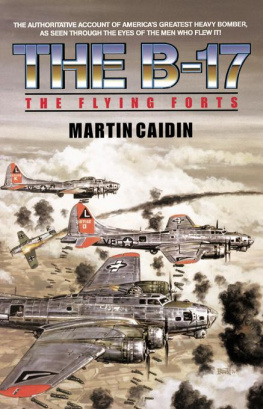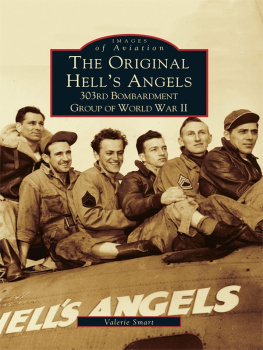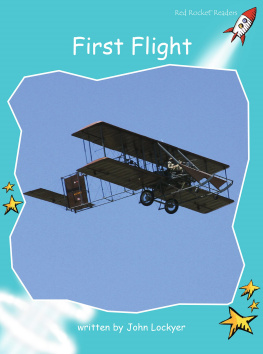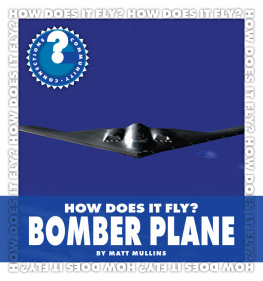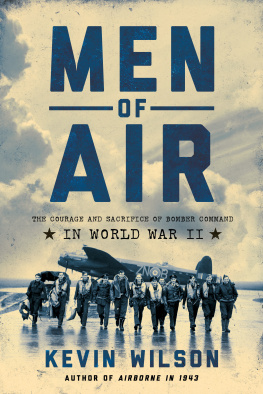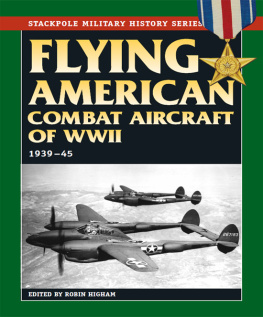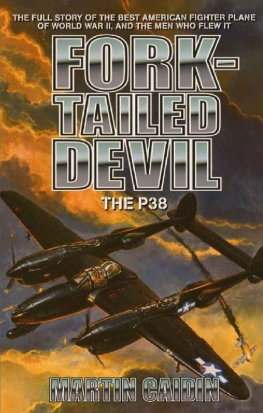MARTIN CAIDIN was the author of over fifty books and more than a thousand magazine articles and was recognized as one of the outstanding aeronautics and aviation authorities in the world. The National War College, the Air Forces Air University and several other institutions use his books as doctrine and strategy guides, historical references and textbooks. He twice won the Aviation/Space Writers Association award as the outstanding author in the field of aviation. Caidin died in March 1997.
M y own association with the Boeing B-17 was of the briefest nature. The time was very close to V-J Day and I was in East St. Louis on my way back to North Camp Hood, Texas. It occurred to me that I might hitchhike successfully out of the local air field on my way back to my station. And yes, there was a plane, a B-17 bound for Victoria, Kansas. There was a slight delay while we waited for our navigator, delivered by a W.A.C.-driven jeep whose crew carefully loaded him up through the open bomb bay. He was able to retain the unconsciousness exhibited at the inception of the flight all the way to its end.
This was not a problem as our pilot was able to fly an iron compass route by simply following the railway tracks on the ground below that showed up on his hand-held map. This B-17 had seen better days and oil leaked from a couple of its engines, but not in a sufficient volume so as to alarm the pilot. He even let me fly his tired old lady for a while. Needless to say we safely reached Victoria or I would not be writing this.
On August 20, 1935, Boeing had only a single B-17, the prototype Model 299. It was a new type of heavy bomber brought into existence as a speculative venture. The stakes were high for the young airplane manufacturer; top management was literally risking the future of the company on their new bomber. As flight tests of Model 299 progressed, it was discovered that this aircraft was like something from a science-fiction novel. Unlike the bomber prototypes from competing companies that were founded on proven experience or a part of the then-limping present of military bomber design, Boeings Model 299 was an aircraft that was many years ahead of its time.
Then, it was almost as if the gods of war had been angered by Boeings dramatic test-flight successes. After another flawless demonstration, Army Air Force Major Pete Hill took Model 299 on a final test flight. The result was a crash that killed everyone on the plane. A board of inquiry subsequently determined that Hill had neglected to perform the most rudimentary preflight test. He had failed to check the control console. If he had, he would have discovered that the elevators and rudder had been locked.
The fortunes of Boeing crashed with Model 299 as well. Proponents of other, lesser, aircraft came quickly forward, questioning the need and practicality of a strategic bomber of such an advanced design. Fortunately, Model 299 had impressed key far-seeing men in the Army Air Force. They managed to get funding for the B-17. Despite the severe setback, Boeing was back in business. Modifications improved performance further, and soon production models were flying off to war. In the aftermath of the attack on Pearl Harbor on December 7, 1941, the B-17 helped provide America with one of its first heroes, Captain Colin Kelly whose B-17, on December 11, was credited with sinking a Japanese battleship off the Philippine coast. Kelly did not survive the attack. Much later it was discovered that Kelly had not attacked a battleship and in fact did not sink anything. But by that time Americaand the B-17was well into the war.
The combat history of the B-17 showed that the initial belief in the ability of the bomber to protect itself against a determined enemy was optimistic. The most tragic example was the second raid on Schweinfurt, Germany in 1943 Black Thursdaywhere B-17 formations without any fighter escorts fought their way through the full wrath of the Luftwaffe. The result was a massacre. Yet despite the incredibly brutal punishment many of the B-17s suffered, planes that by all rights should have crashed, managed to bring their fearsomely wounded crews home. After Schweinfurt, some questioned if the strategic bomber offensive was a failure. It was not. But clearly, in order to perform its mission of striking deep into enemy territory, the B-17 would need help.
That help came in the form of the Little Friendsthe fighters. P-38s, P-47s, and the bestest Little Friend of them all, the P-51 equipped with long-range auxiliary fuel tanks. The skies over Germany and occupied Europe were filled with the warplanes of the U.S. 8th Air Force. Domination of the sky above Normandy during D-Day was so complete that General Eisenhower said to his troops, If you see fighting aircraft over you, they will be ours."
The B-17s attacks on Germanys industry continued and by the end of February 1945, that nations major cities were in smoldering ruins from border to border. In writing THE B-17: THE FLYING FORTS, Martin Caidin wrote a stirring tribute to a great warplane and the gallant men who flew it.
David Ballantine
New York
July 2001
There is an old saying that the military historian enjoys the invaluable vantage of 20-20 hindsight. Studying past events with impersonal objectivity, he is able to peer through the eyes of a hundred or a thousand combatants of a single great conflict. He is afforded the unique attitudes of both sides and, painstakingly, as much as is possible after the dimming of memory and the obliteration inevitably of certain records, he reweaves the tapestry of what has gone before. Omissions most certainly there will be. Yet the task is immeasurably simpler than if the historian were required to fulfill his role during those moments when the events in issue were being enacted. History is the eagles view and the perspective of the back room. The historian uses both to solve the mysteries of the past.
Well, almost.
When shortly after the turn of the century men took to the air to wage war, they also baffled and harassed the historian. Until the Great War of 19141918 fields of battle might be revisited and the paths of armies walked again. There were maps to consult and points of shredded geography to relearn what had trampled the earth underfoot. Even great battles at sea, with ponderous vessels chained to strategies long established, remained restricted within time and two-dimensional movement.
Not so the arena of aerial conflict. There, as many as thirty thousand men in winged chariots have fought a single terrible duel that covered not simply thousands of square miles, but tens of thousands of cubic miles. An arena where, only minutes after unbridled fury, the nature of the skies erased forever the scars of battle.
The only marker of the combat waged in the heavens is the memory of the participants and the statistical hieroglyphics of the survivors. Never is there the opportunity to revisit the scenes where men and machines clashed. The debris and sputum of battle, the contrails and funereal pyres of greasy smoke, the shattered chunks and bits and pieces of metal, the searing lash of flame; gleaming empty shell cases and torn parachutes, gutted behemoths and limb-flailing men.... All these vanish forever with the first sigh of the wind. There is no such thunder in history nor will ever be again, as filled the skies of Europe during World War II. A thunder from a stream of mighty bombers many hundreds of miles in length, ten thousand engines beating sonorously against an earth far below. And the cry, deep-throated and howling, of another three thousand enginesthe fighters rising and swooping to do battle. Thunder upon thunder, explosions and racketing thousands of guns, a cacophonous rainfall of millions of spent bullets and cannon shells and debris and bombs.

